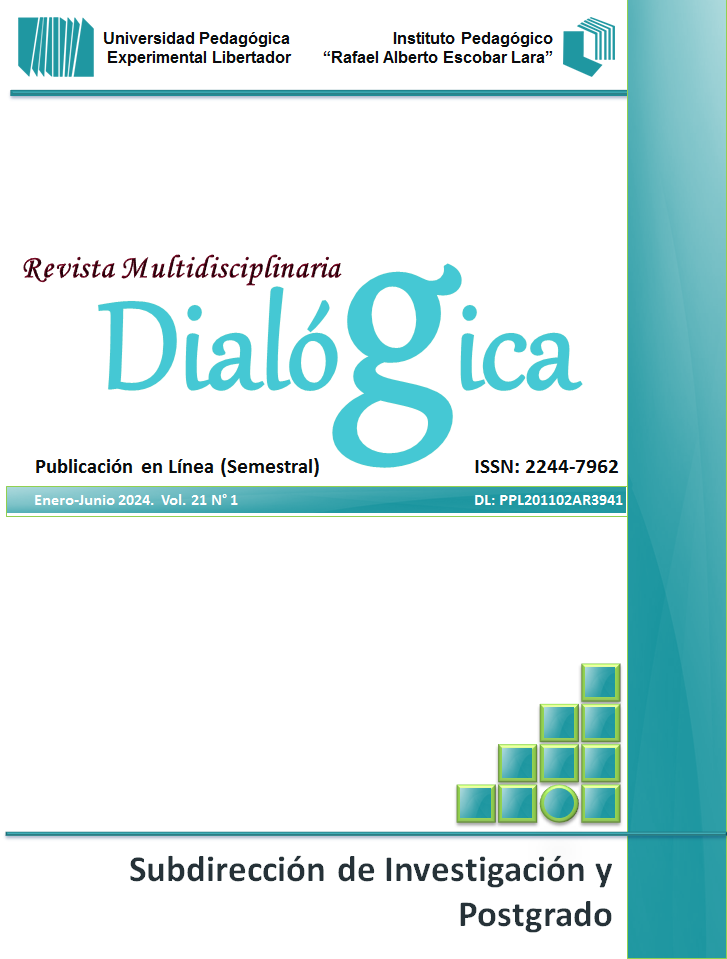HOLY SEPULCHER OF VILLA OF CURE: CULTURAL MANIFESTATION OF THE ARAGUA STATE
DOI:
https://doi.org/10.56219/dialgica.v21i1.2880Keywords:
Sepulcher, cultural - religious manifestation, devotees, FaithAbstract
The cultural manifestations of a religious nature present in a locality are based on a notable distinction of beliefs and practices that underpin the historical and experiential heritage of a geographical space, thus creating a landscape of interculturality in the population, and that is the case of the locality of Villa de Cura, Aragua State (Venezuela), with the procession of the Holy Sepulcher, characterized by its ability to mobilize devotees every Friday of each Holy Week. The purpose of this article is to describe this religious-cultural manifestation from some documents and history life of one of the Saint's bearers. According to Malinowski (1984), Culture is the “integral whole constituted by the utensils and goods of consumers, by the body of norms that govern the various social groups, by ideas and crafts, beliefs and customs” (p.56). All these characteristics are brought together by this Araguan cultural-religious expression
References
Chárriez, M. (2012). Historias de Vida: Una metodología de investigación cualitativa. https://www.uv.mx/psicologia/files/2017/12/historias_de_vida_una_metodologia_de_investigacion_cualitativa.pdf
Ferrarotti, F. (1990). La Historia y lo Cotidiano. https://docplayer.es/208055075-La-historia-y-lo-cotidiano.html
Gaarder, J. (1991). El Mundo de Sofía. Oslo: Siruela.
González, H. (2022). Santo Sepulcro de Villa de Cura: 204 años de devoción y tradición.https://elsiglo.com.ve/2022/04/08/santo-sepulcro-villa-de-cura/
La Santa Biblia, tr. 1988.
Malinowski, B. (1984). Una Teoría Científica de la Cultura. Sarpe.
Morillo, J. (2016). Santo Sepulcro de Villa de Cura. https://steemit.com/spanish/@jennimorillo/santo-sepulcro-de-villa-de-cura#:~:text=Sobre%20el%20origen%20de%20la,esperaban%20en%20Villa%20de%20Cura
Ley Orgánica de Cultura. (2014). https://albaciudad.org/wp-content/uploads/2014/12/Gaceta-Oficial-Extraordinaria-N%C2%BA-6.154-LOC.pdf
Downloads
Published
How to Cite
Issue
Section
License
Copyright (c) 2024 Pastor Eduardo Carmona Blanco, Rolando Antonio García Hernández

This work is licensed under a Creative Commons Attribution-NonCommercial-ShareAlike 4.0 International License.


 @revistadialogica
@revistadialogica DialogicaUPEL
DialogicaUPEL RevistaDialogicaUPELMaracay
RevistaDialogicaUPELMaracay dialógicaupel@gmail.com
dialógicaupel@gmail.com dialogicaupel.blogspot.com
dialogicaupel.blogspot.com https://issuu.com/dialogicaupel
https://issuu.com/dialogicaupel https://revistas.upel.edu.ve/index.php/dialogica/
https://revistas.upel.edu.ve/index.php/dialogica/









